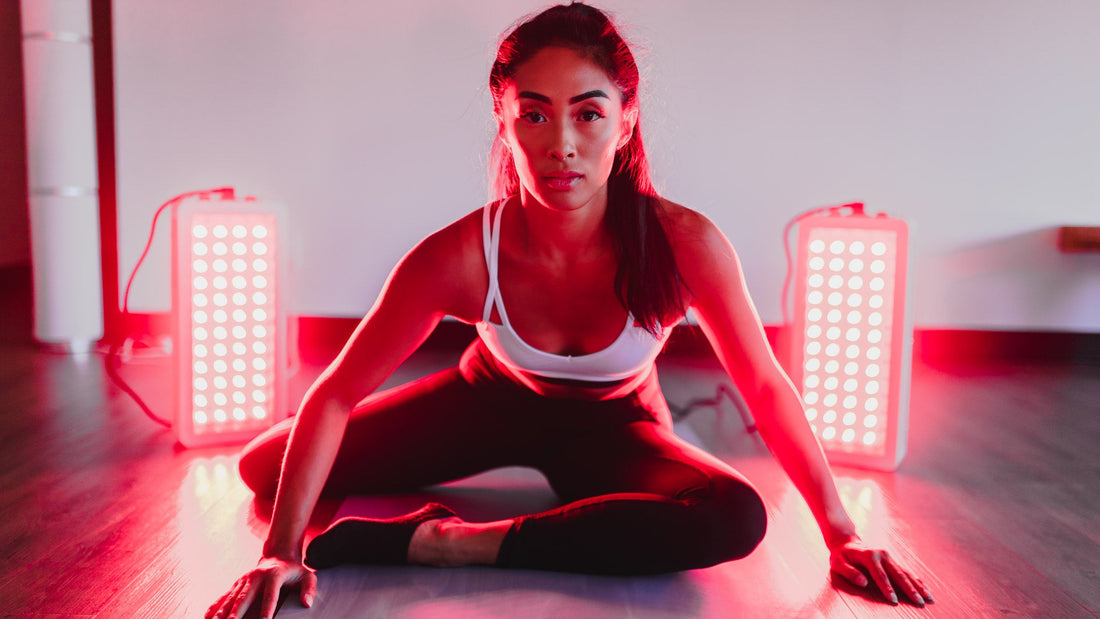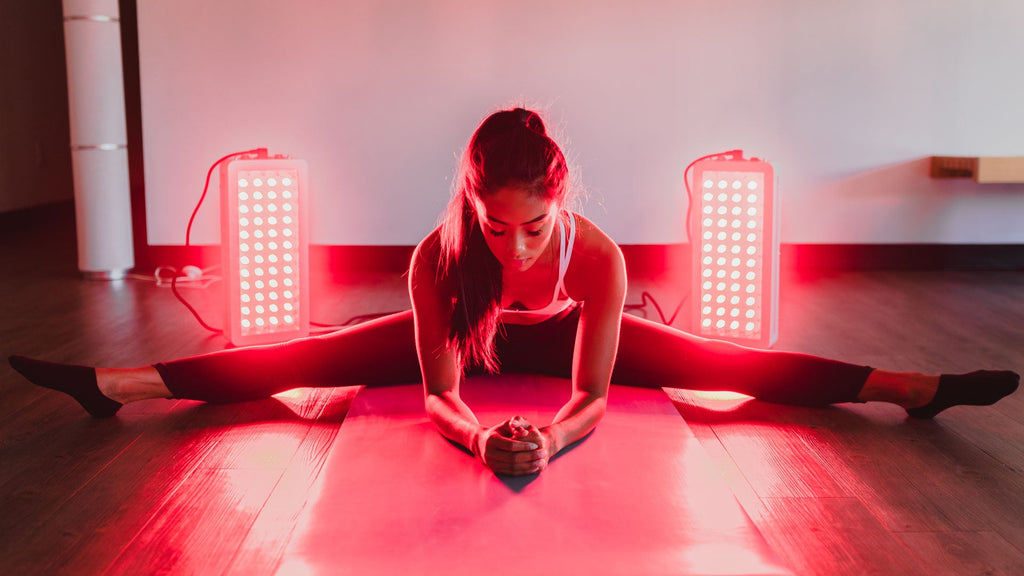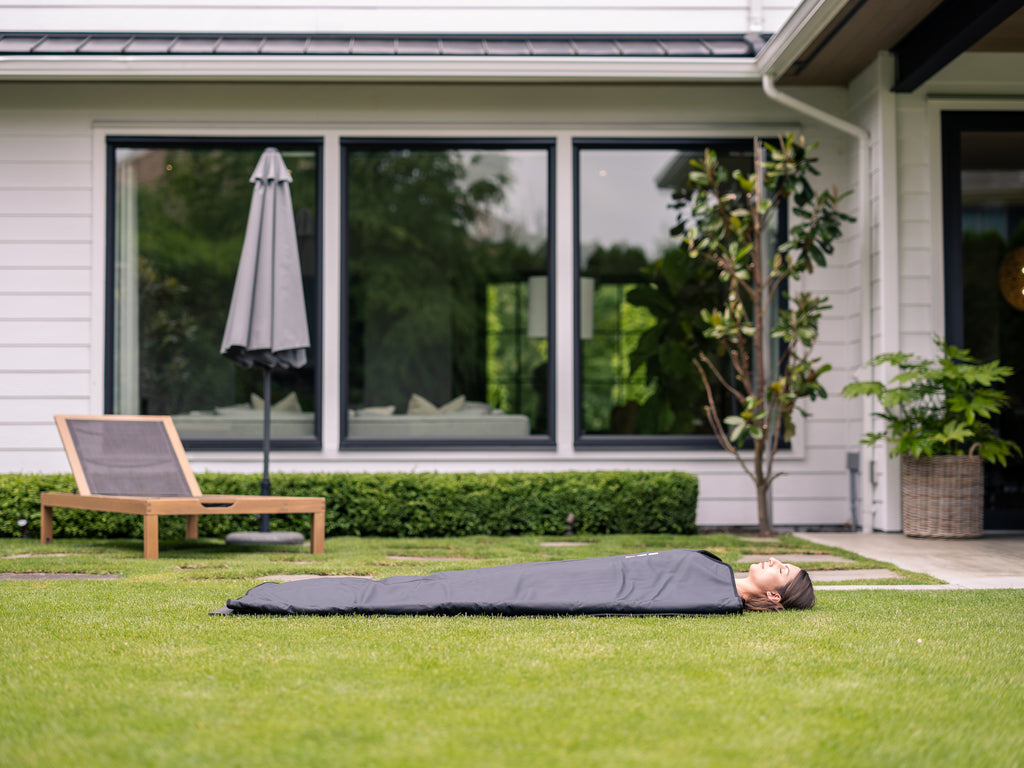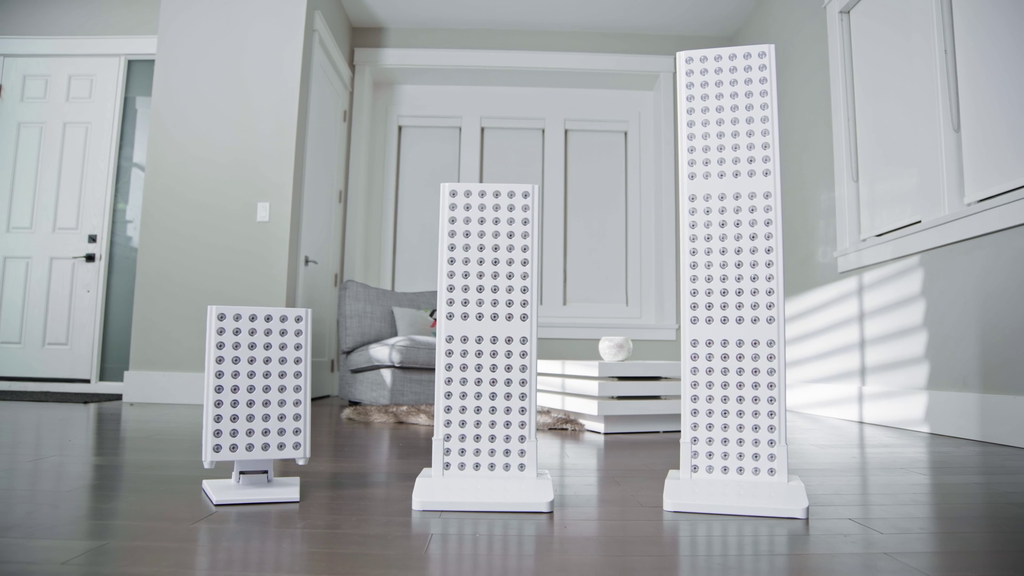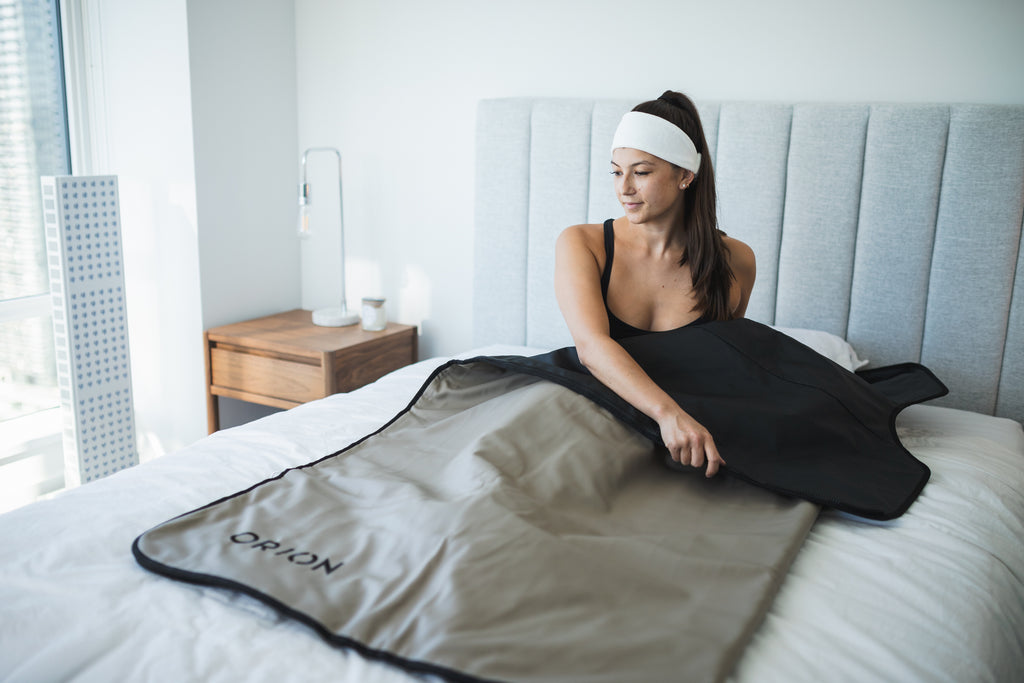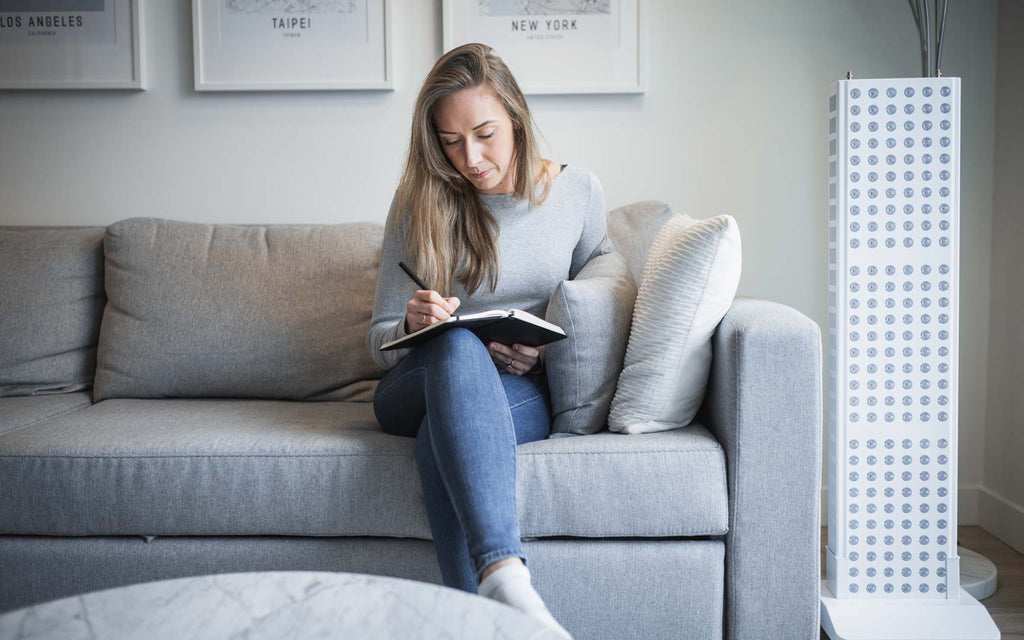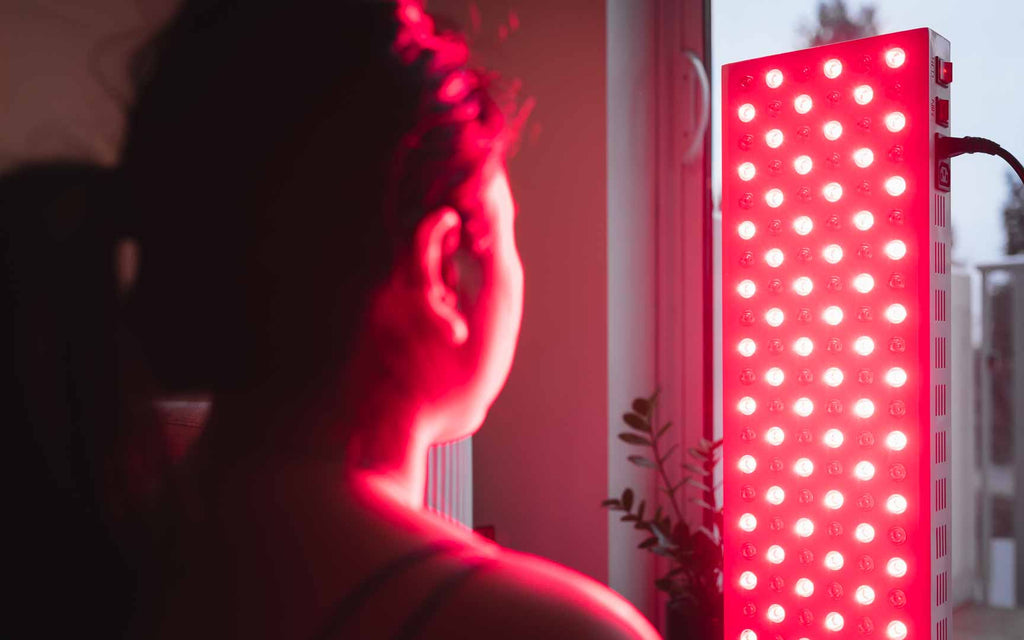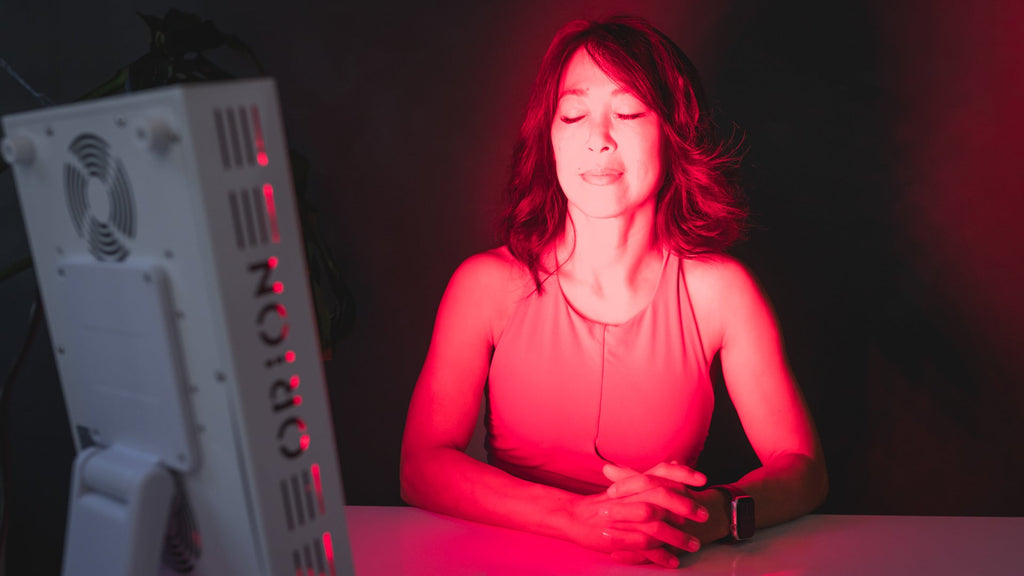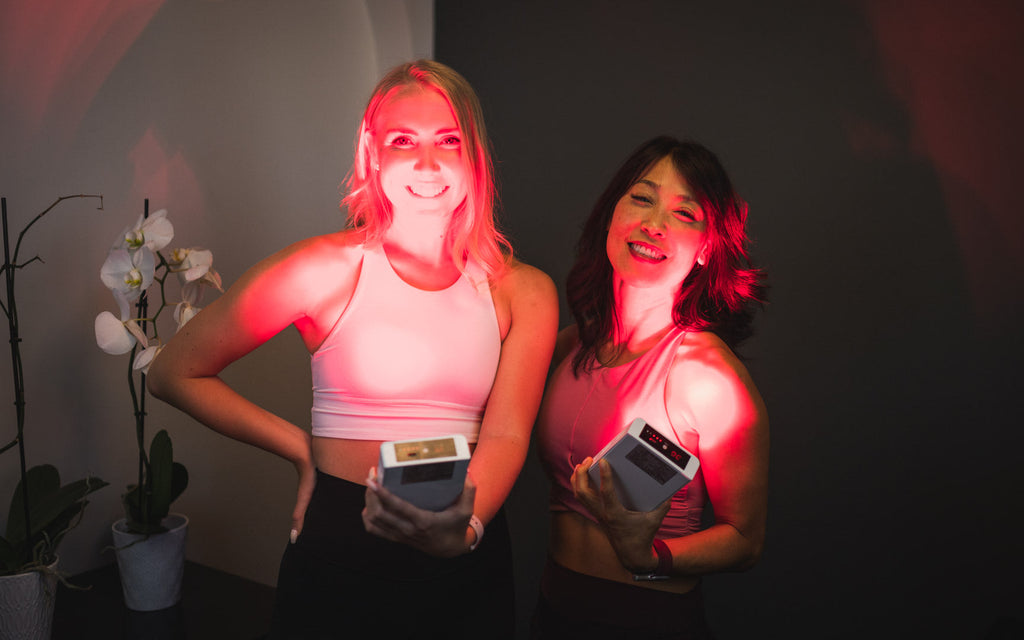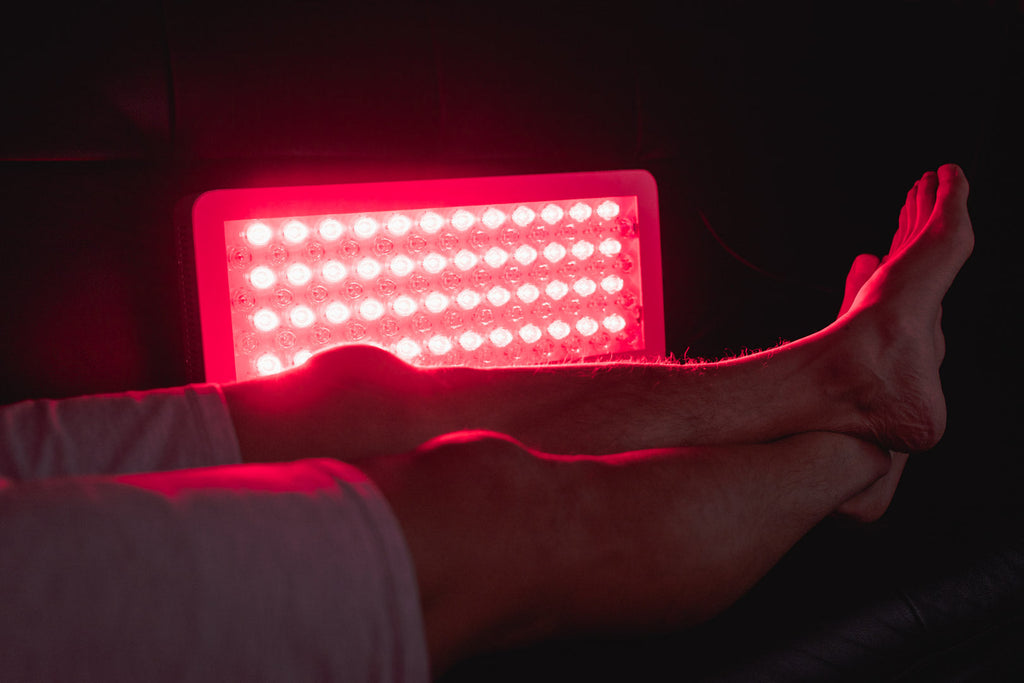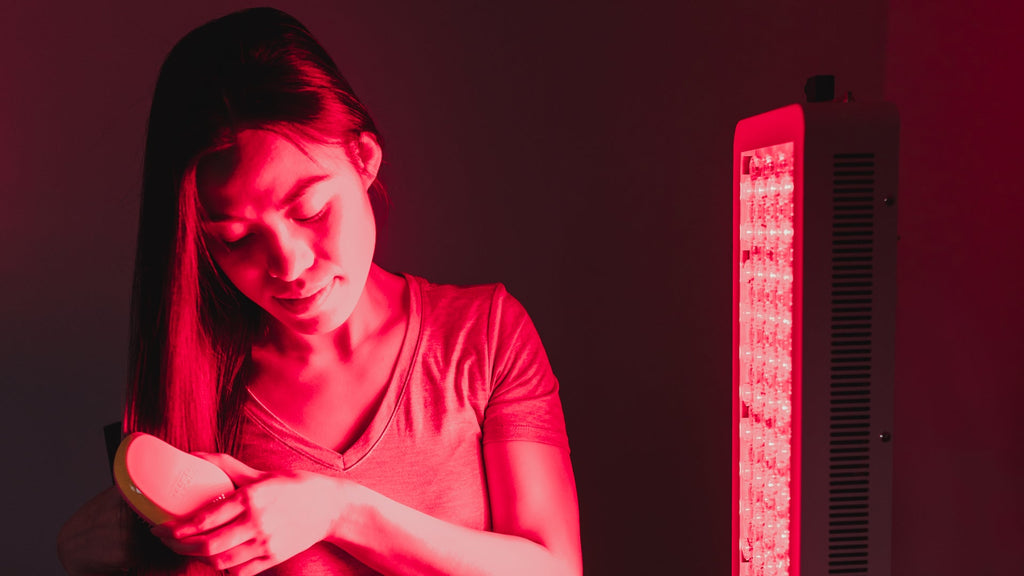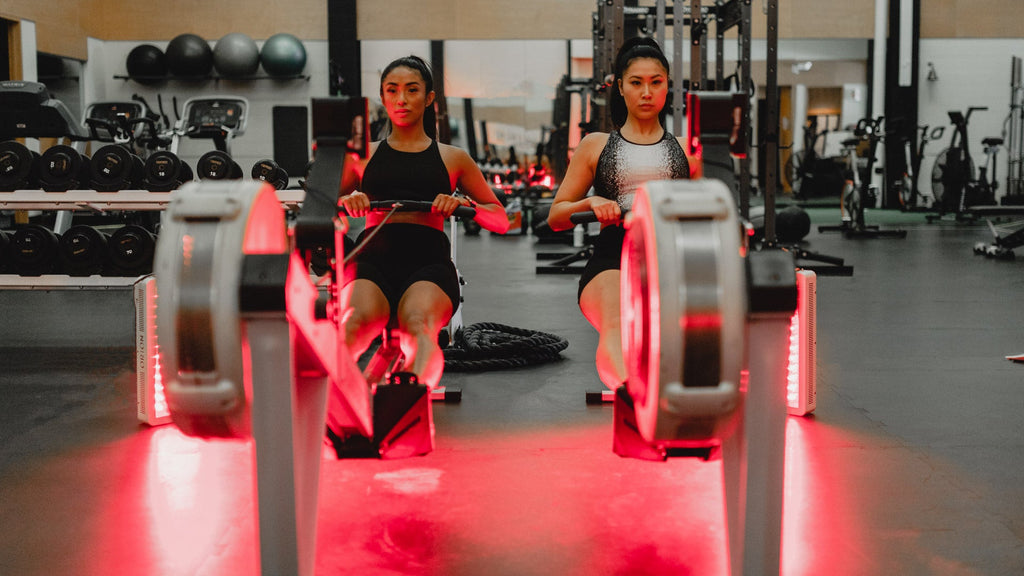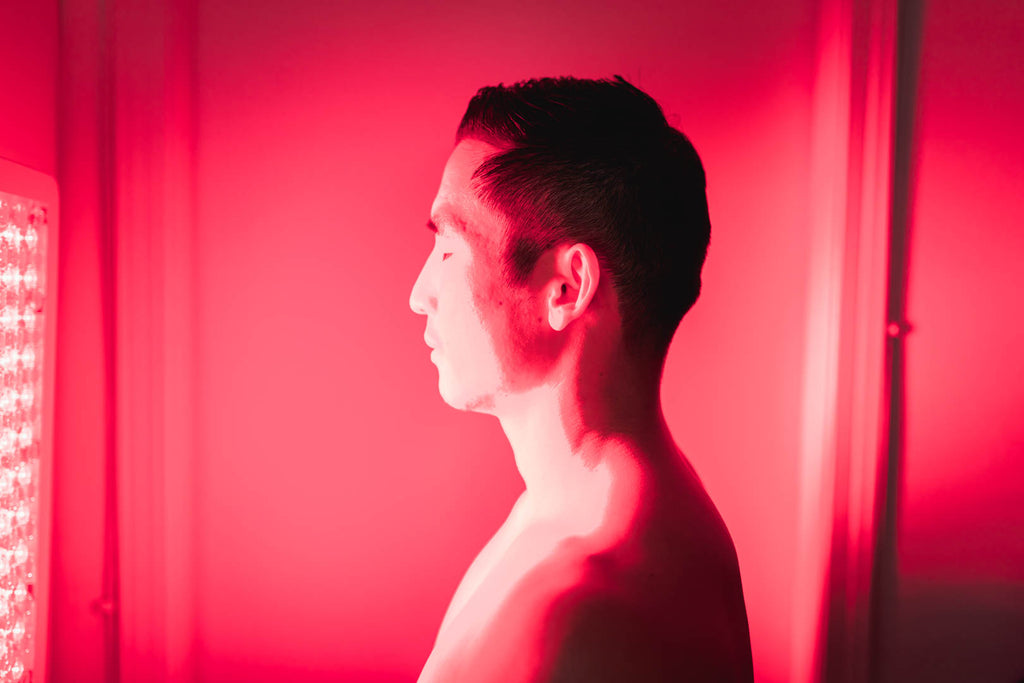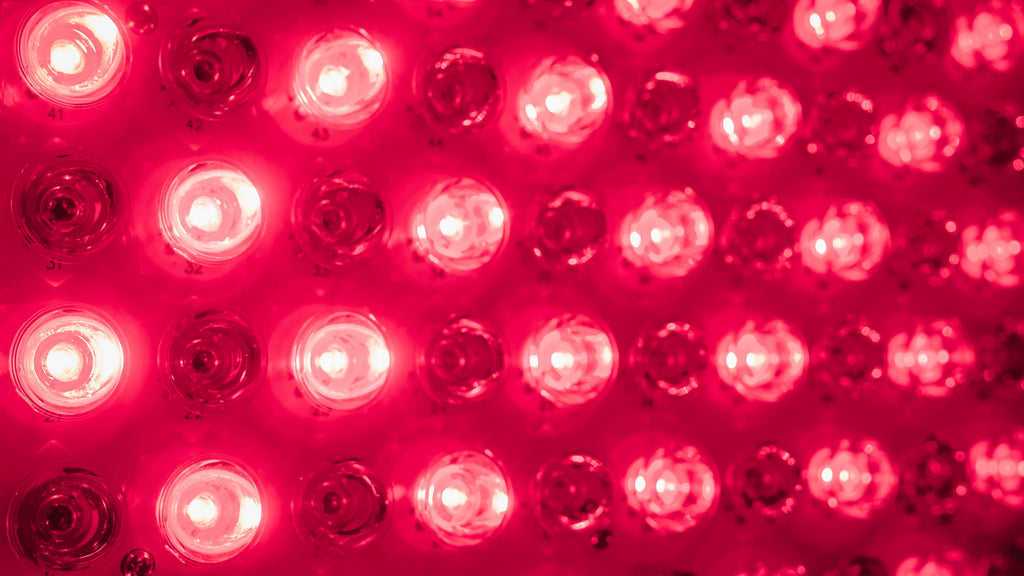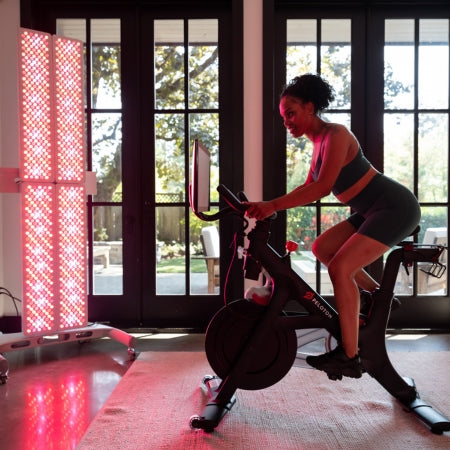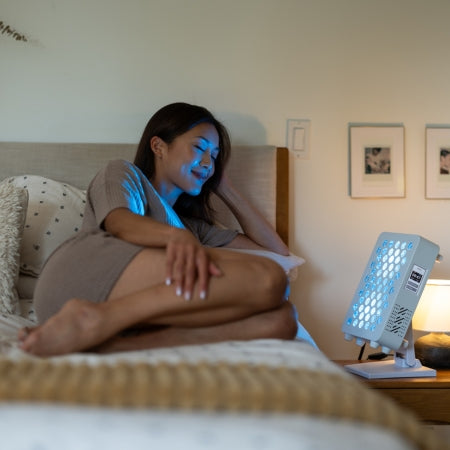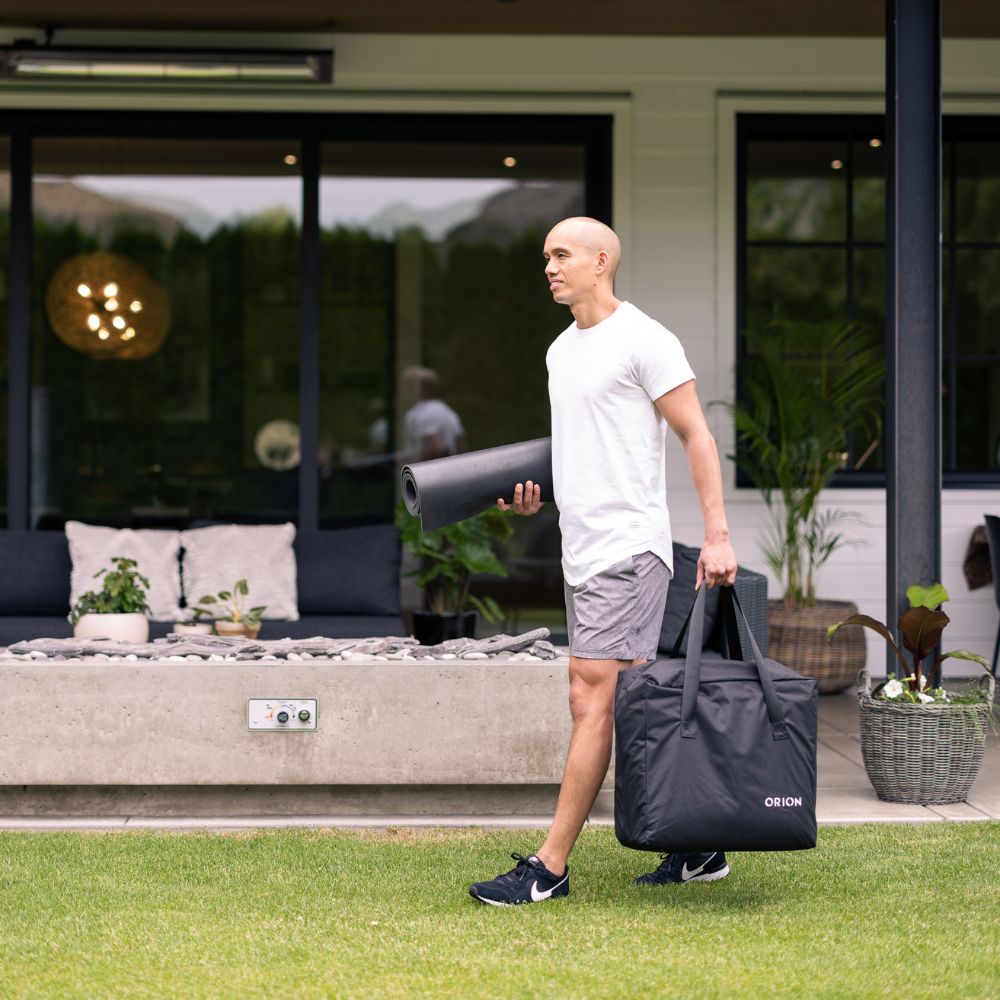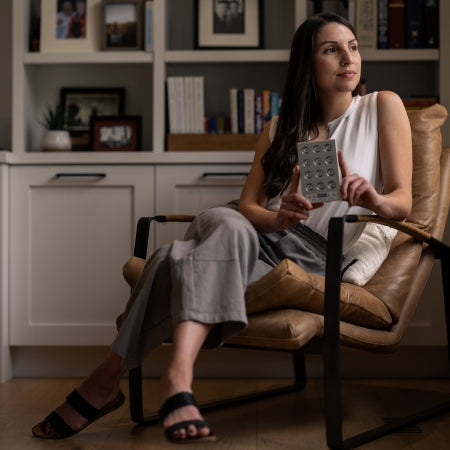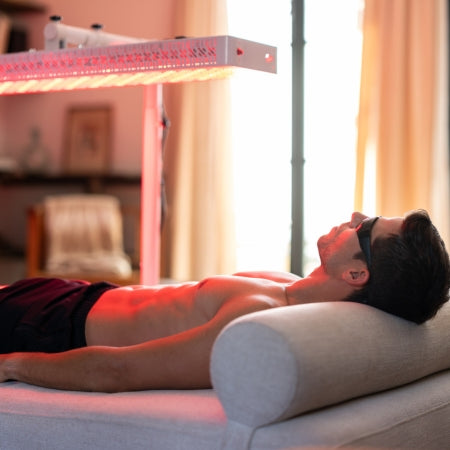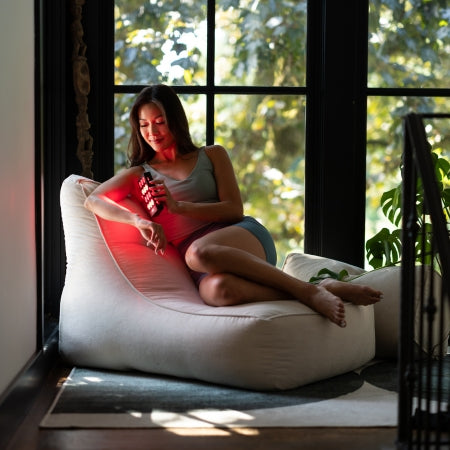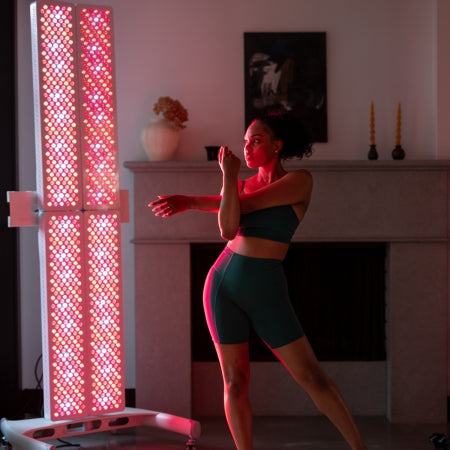What is Collagen?
Collagen is the most abundant type of protein found in the body to help build healthy bones, skin, hair, tendons, and connective tissues.
There are over 16 types of collagen that the body produces. The most common are Types I-IV [1].
Their main purposes are:
- Type I. This type provides support and structure for skin, tendon, bone, ligaments and connective tissues. This makes up most of the collagen that is created in the body.
- Type II. This type produces fibers and cartilage to provide support for our joints.
- Type III. This type contributes to the healthy structure of our skin, muscle, and blood vessels.
- Type IV. This type helps form outer layers of our organs and structures to separate them from connective tissues.
As the body ages, the ability to produce collagen slowly declines. Lower quality of collagen is produced as well.
How does Red Light Therapy boost collagen?
Red light therapy (RLT) is a non-invasive treatment that delivers concentrated red and near-infrared light to your cells. RLT boosts collagen by using medical-grade 5w LEDs to project red light at 660nm and near-infrared light at 850nm onto your body.
Find out more on How Red Light Therapy Works.
One study found that skin complexion, collagen intensity, and wrinkle status significantly improved through the use of red light therapy. [2]
Another study found that red light therapy increased collagen production to accelerate the wound healing process in animals. [3]
⠀
Orion uses the most clinically proven wavelengths of red (660nm) and near-infrared (850nm) light to stimulate the production of collagen. We recommend daily 10-15 minute treatments for the best results.
[1] Lodish, H., Berk, A., Zipursky, S. L., Matsudaira, P., Baltimore, D., & Darnell, J. (2000). Collagen: the fibrous proteins of the matrix. Molecular cell biology (4th ed.). New York.
[2] Wunsch, A. & Matuschka, K. (2014). A controlled trial to determine the efficacy of red and near-infrared light treatment in patient satisfaction, reducution of fine lines, wrinkles, and skin roughness, and intradermal collagen density increase. Photomedicine and Laser Surgery.
[3] Rocha, J. C. ..., & Parizotto, N. A. (2016). Low-level laser therapy (904nm) can increase collagen and reduce oxidative and nitrosative stress in diabetic wounded mouse skin. Journal of Photochemistry and Photobiology Biology, 164, 96-102. doi:10.1016/j.jphotobiol.2016.09.017⠀



